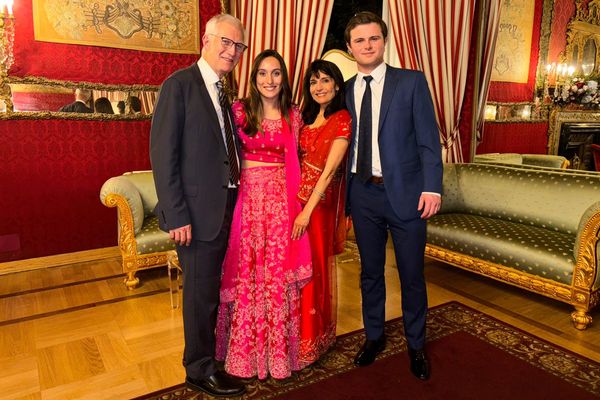
- Lab-grown diamonds have grown in popularity among Gen Z and millennial consumers. Some say it's because they're more "sustainable" but Pandora's CEO told Fortune the gem size, design, and price are the real reasons these stones are all the rage
More than 75 years ago mining giant De Beers began promising enamored young couples that “a diamond is forever.” Since then the market has grown into a $96 billion behemoth—but it turns out the buyers of today are more bothered about price tags than provenance.
Millennials and Generation Z are increasingly shaking up the historic market by shunning the naturally sparkling rock for man-made, lab-grown alternatives. But despite claiming to be the most environmentally conscientious generation yet, young people’s obsession with lab-grown diamonds isn’t because they prioritize the great outdoors—at least, that's according to Pandora's CEO.
“When we talk about product choice, there are only two things that actually drive behavior,” Alexander Lacik, who spearheads the world’s largest jeweler, told Fortune.
“You may claim that you do other things,” he adds. “But design is absolutely the most important aspect of your purchase decision on a product—and the second criterion is price.”
The Copenhagen-based company, famed for its charms, didn’t have any presence in the diamond industry until 2021. That was, until it realized it could “democratize” the sparkling stones for the masses with affordable lab-grown alternatives.
The company first tested the waters with its Pandora Brilliance collection in the U.K. Following a successful launch, Pandora has since rolled out the line to the U.S., Canada, Australia, Mexico, and Brazil.
Last year, revenue from sales of its lab-grown diamonds reached 265 million Danish krone ($38.5 million), and by 2026 the Danish retailer is aiming to bring in the billions. Meanwhile, its share price nearly doubled in 2023 and is showing no signs of slowing down. This week, Pandora's stock rose to a record-breaking high.
“As a brand, we sell to 15-year-old girls and 65-year-old women,” Lacik says, with the caveat that mostly millennials and Gen Z are shopping its lab-grown diamonds collection.
Even millennial A-listers, including Selena Gomez and Jennifer Lawrence, are fans of the man-made alternatives.
It only further proves Lacik’s point about the design coming first and foremost when it comes to jewelry: “If it had looked like c--p, they wouldn't put it on—unless I paid them a ton of money, which I haven't,” he jokes. “So it comes back to that driver.”
Lab-grown diamonds are less expensive
With an estimated net worth of $160 million, Jennifer Lawrence clearly isn’t adorning herself in Pandora’s lab-grown diamond jewelry to save cash.
But of course for the average young customer it doesn’t hurt that they are reported to be 60% to 85% less expensive than diamonds mined from the earth.
@lajoyajewelry I can't think of ONE reason why not to get a lab grown diamond.. try me in the comments 🍿 #labgrowndiamonds #diamondrings #engagementrings #lajoyajewelry #proposalring #ringgoals #engagedlife #engagementringideas #engagementringinspo #engagementringstyle #futuremrs #silverengagementrings #silvering ♬ Montagem Rave Eterno - Dj Samir & Fyex
For example, a traditional solitaire Pandora ring, with a sparkling one-carat lab-grown diamond sitting on a 14K white-gold band, will set you back $1,750. At the other end of the scale, a mined alternative costs upwards of $16,000 at luxury brand Tiffany & Co. for the same size and style.
“It's a matter of value,” Lacik explains.
It’s not that customers are necessarily buying lab-grown diamonds to make big cash-savings, but they’re finding that they can size up and get more bang for their buck when they go man-made.
“Women like bigger stones. That's the way the world works, whether we like it or not,” Lacik says, laughing. “Customers—when it comes to the bridal engagement space—are opting for spending the same or similar amount of money, but for a significantly larger stone.”
He adds: “It's not price point, it's the value proposition. You have to look at, What do I get for the money that I'm willing to spend?”
Even entrepreneur and former NYC Real Housewife Bethenny Frankel weighed in on TikTok, saying "luxury jewelry is over as we know it" thanks to lab-grown diamonds.
@bethennyfrankel Fine jewelry has changed forever PS. The last ones are not lab grown crystals, they’re lab grown gemstones. #luxuryjewelry #holiday #finejewelry #dorsey #keyzar #verstolo #labgrown #diamonds #emeralds ♬ original sound - Bethenny Frankel
Sustainability is nothing more than a ‘nice to have’
Some millennials and Gen Zers are proudly showing off their lab-grown diamonds on social media, stating their choice to ditch natural diamonds formed in the earth’s crust is for sustainability and ethical reasons.
One young fiancée shared on TikTok that supporting the mined diamond industry “wasn’t something I could ethically support for people or planet.”
@carissaandclimate he knows me too well 🥹 follow along as we try to plan a #sustainablewedding 💍🌷🌎🪸#engagementring #engaged #labgrowndiamonds #ecowedding #greenwedding #sustainablewedding ♬ original sound - Carissa 🐋 Ocean Conservation
Contrary to what the youth of today are saying online, eco-friendliness is just the cherry on the top, says Lacik.
“ESG is a nice feature, and for the people that are interested we have a good story to tell, but it's not the driver of the business,” Lacik says.
Yet that doesn’t mean businesses shouldn’t bother doing good. When torn between one brand and another, Lacik thinks that ESG could well be the deciding factor for young customers.
Just don’t hold your breath on sustainability making sales go through the roof, he adds. “I'll be dead before somebody comes into my shops and says, 'Can you show me your sustainable products?' It's just not in people's minds when they're shopping this category.”
A version of this story was originally published on Fortune.com on March 3, 2024.







